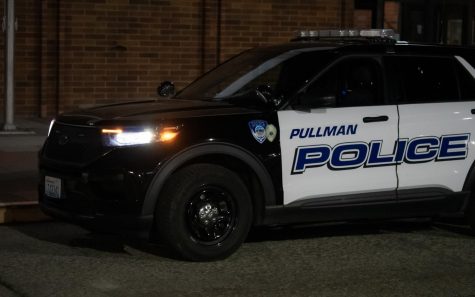Enemy-devouring wasps
November 4, 2015
A non-native wasp was recently discovered in Washington with a life cycle similar to the 1979 science fiction horror flick, Aliens. Unlike the movie, this wasp is beneficial to humans and consumes the eggs of its natural enemies; it’s the destructive invasive species known as the brown marmorated stink bug.
“It’s truly like a mini-horror film for the stink bug,” said Tracy Leskey, a United States Department of Agriculture (USDA) research entomologist.
Clusters of parasitized egg masses were discovered in Vancouver, Washington, in August by a field technician.
USDA and land grant researchers across the country have been working together to study the natural enemies of the stink bug and possible biological containment methods.
Trissolcus japonicas and several other natural enemies of the stinkbug have been going through a quarantine screening process since 2007.
“We know from the DNA that they do not come from the same population, it’s not a case of an escaped wasp, but from a separate population,” said Elijah Talamas, a USDA research entomologist.
The wasp was discovered in the wild in Washington and Virginia this year, and Maryland last year, said Elizebeth Beers, a WSU professor at the Department of Tree Fruit Research and Extension. She believes the specimens of wild wasps discovered were accidentally introduced, similarly to the stinkbugs, through global trade with Asia.
“It’s clear that this wasp is in the wild, and not from the quarantined group. It was introduced in the same way the stink bugs were introduced,” Beers said.
The brown marmorated stink bug feeds on a wide variety of crops, usually destroying them in the process. In the winter, hordes of the insects takes shelter in people’s homes.
“These stink bugs have been well established on the East Coast for about a decade and recently invaded the West Coast.” Talamas said.
The stinkbugs lay eggs in clusters about the size of a pin on plant life. The female wasp, only a centimeter long, then uses her ovipositor, rather than a stinger, to deposit her own eggs inside the stink bug eggs. The wasps consume the stinkbug eggs in their own development and chew their way out when they hatch.
“If you can imagine the movie alien, these parasitic wasps act in much of the same way,” said Kim Hoelmer, a USDA research entomologist.
Beers said the USDA will continue screen testing of the wasp and apply for what is essentially a “permit” to release the wasp into the wild.
Hoelmer said before the discovery of the other populations of wasps, the quarantined group was nearing the point of field release. The researchers have shifted their focus to finding the speed at which the wild populations of wasps are spreading while continuing their work with the quarantined wasp.
“Until we know the speed, it could be that the wasps we have are still needed,” Hoelmer said.




















